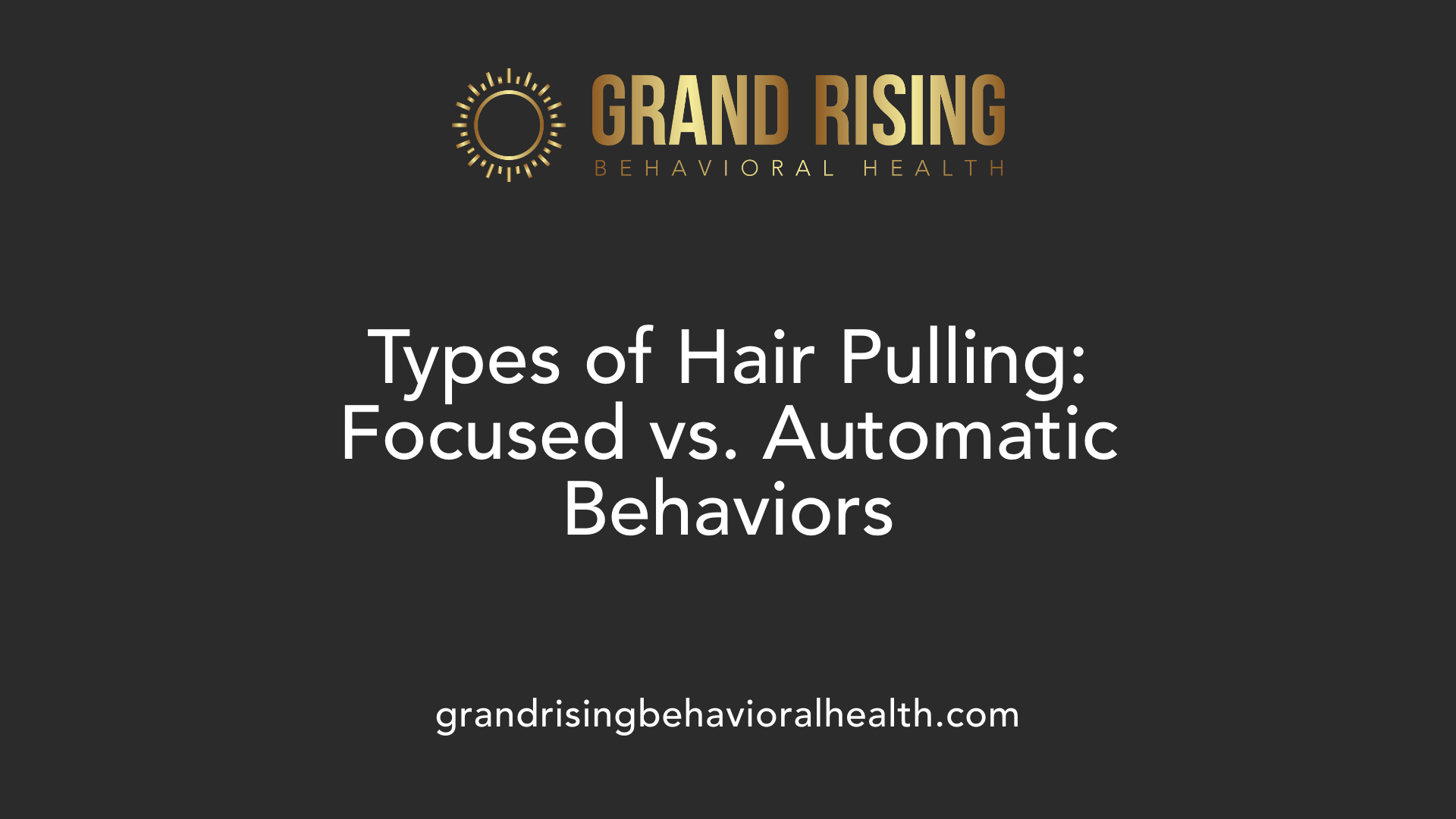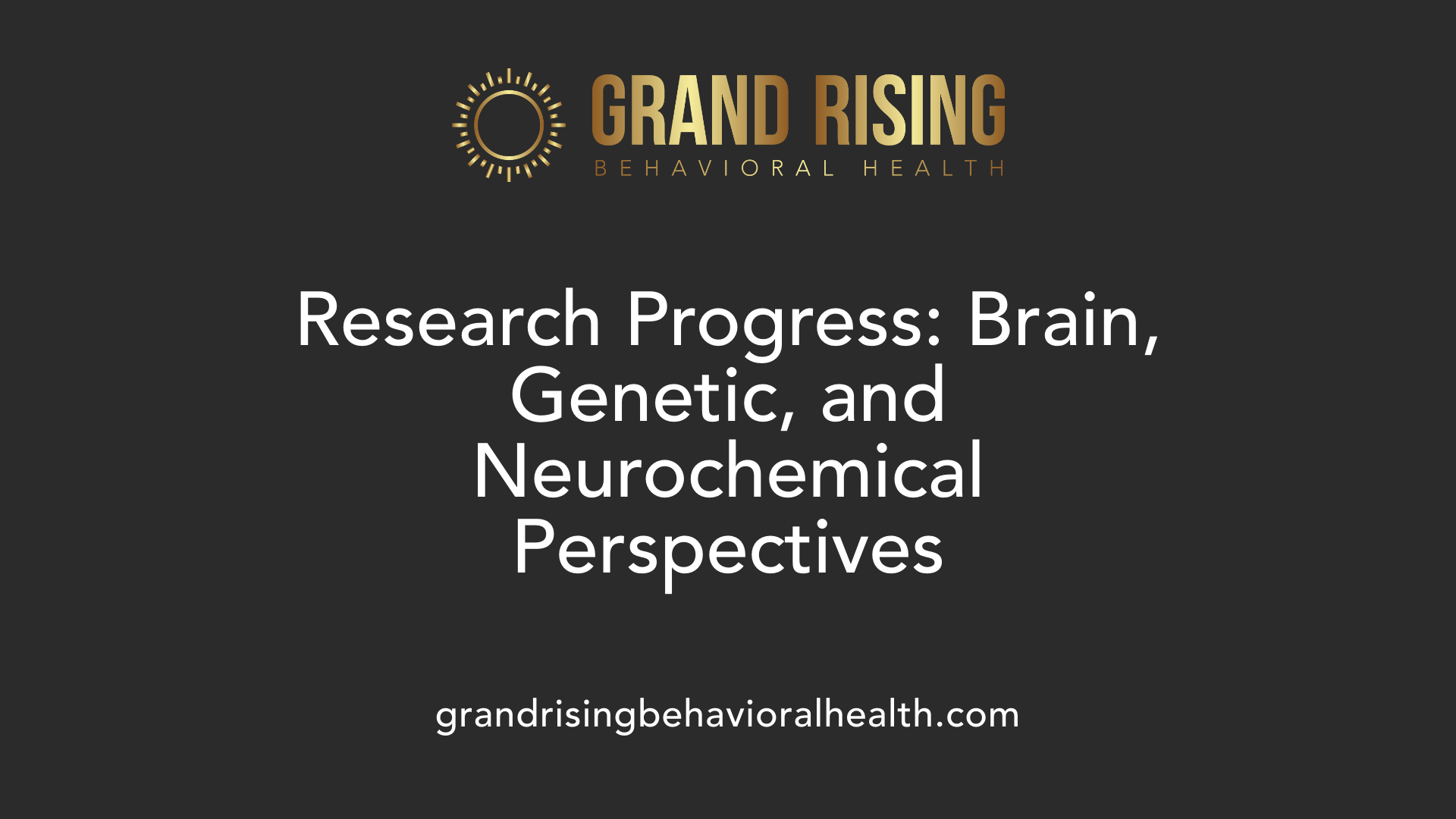Trichotillomania: The Hair-Pulling Disorder
Unmasking the Hidden Struggles: Understanding Trichotillomania

A Comprehensive Look at Hair-Pulling Disorder
Trichotillomania, commonly known as hair-pulling disorder, is a complex and often misunderstood mental health condition. Characterized by an irresistible urge to pull out hair from various parts of the body, it affects individuals across different ages, genders, and backgrounds. This article explores the disorder's nature, symptoms, causes, diagnosis, treatment options, and the ongoing research that shapes our understanding of this challenging condition.
Defining Trichotillomania and Its Characteristics

What is trichotillomania?
Trichotillomania, also called hair-pulling disorder, is a mental health condition characterized by recurrent, irresistible urges to pull out hair from various parts of the body, such as the scalp, eyebrows, eyelashes, or other regions. It is classified under obsessive-compulsive spectrum disorders but distinguished by the absence of obsessive thoughts and the presence of a compulsive habit that often provides relief or pleasure.
How does trichotillomania present physically?
Physically, trichotillomania manifests through noticeable hair loss, patchy bald spots, skin damage, broken hair, and sometimes skin infections. In severe cases, individuals may develop permanent scarring or ingest pulled hair, leading to digestive complications like trichobezoars.
What are the affected areas?
The most common areas targeted by hair pulling are the scalp, eyebrows, and eyelashes. However, the disorder can involve multiple sites on the body, including facial hair, arms, legs, or pubic areas. The specific site may change over time, and some individuals may focus on only one or two regions, while others pull from multiple areas.
Types of hair pulling
Trichotillomania can occur as focused pulling, where the individual actively seeks out hair to pull, often to relieve tension, or as automatic pulling, happening unconsciously during routine activities. These different patterns can influence treatment strategies and understanding of the disorder.
| Affected Sites | Commonality | Additional Details |
|---|---|---|
| Scalp | Most frequent | Can lead to significant bald patches |
| Eyebrows | Very common | Causes noticeable thinning |
| Eyelashes | Frequently affected | Can result in sparse lashes |
| Face, Arms, Legs | Less common | Can involve multiple regions |
Understanding these physical characteristics helps in diagnosing trichotillomania effectively and tailoring appropriate treatment strategies.
Symptoms and Signs of Trichotillomania
What are the common symptoms and signs of trichotillomania?
Individuals with trichotillomania often exhibit recurrent hair-pulling behaviors that target areas such as the scalp, eyebrows, eyelashes, or other body regions. This repetitive pulling results in visible hair loss, which can appear as patchy bald spots or uneven thinning on affected sites.
A hallmark symptom is the presence of an increasing sense of tension or urge before pulling, which provides a temporary alleviation or feelings of relief after hair removal. The activity can happen either automatically, without conscious awareness, or with focused intention, often to manage emotional discomfort.
Additional signs include behaviors like inspecting or manipulating hair after pulling, searching for specific hairs, or even biting or swallowing pulled hair. These actions can lead to the formation of hairballs, known as trichobezoars, causing further health complications.
Physical indicators also encompass skin irritation, broken hairs, and, in some cases, permanent scarring from repeated trauma. Emotional signs include feelings of embarrassment, shame, or self-consciousness, which might lead individuals to hide their hair loss or engage in social withdrawal.
Why do individuals pull hair — what triggers this behavior?
The triggers for hair pulling are often linked to emotional states such as stress, boredom, frustration, or anxiety. For many, pulling hair acts as a form of self-soothing or stress relief, providing a fleeting sense of calm. Some individuals may pull their hair unconsciously during passive activities like reading, watching TV, or resting, which further reinforces automatic habits.
In other cases, focusing on specific hairs or engaging in the act intentionally helps temporarily alleviate negative feelings or uncomfortable sensations, like tingling or itchiness. Although the behavior provides relief, it often leads to feelings of guilt or shame once the act is completed, adversely affecting self-esteem and social functioning.
Understanding these symptoms and triggers is essential for diagnosing and tailoring effective treatment strategies to help individuals regain control over their behaviors and improve their emotional well-being.
Exploring the Causes and Etiology
What causes trichotillomania?
The origins of trichotillomania continue to be a subject of ongoing research, but current understanding indicates a complex interplay of multiple factors. Although a definitive cause has not been established, evidence suggests that genetic, neurobiological, and environmental influences all contribute.
Genetic predisposition is supported by twin studies and family histories, indicating that this disorder can run in families, pointing toward inherited vulnerabilities. Neurobiological factors are also prominent, with research identifying differences in brain structure and chemistry.
Neuroimaging studies reveal abnormalities in areas such as the right inferior frontal gyrus, which is involved in impulse control, and in cerebellar volumes, which are associated with coordination and cognitive functions. Additionally, neurochemical imbalances, particularly involving serotonin pathways, have been observed. These findings help explain why some individuals respond to medications like SSRIs.
Environmental influences play a significant role as well. Factors such as ongoing stress, boredom, and emotional distress can trigger or reinforce hair-pulling behaviors. Many individuals use hair pulling as a coping mechanism to relieve anxiety or tension, which potentially becomes a habitual response over time.
Are there neurobiological explanations for this disorder?
Indeed, neurobiological research provides valuable insights into trichotillomania. Structural brain abnormalities, notably in regions responsible for self-control and emotion regulation, support the theory of a neurological component. For example, differences in the size and activity of the right inferior frontal gyrus have been documented.
Moreover, studies on brain chemistry suggest that serotonin, a neurotransmitter involved in mood regulation and impulse control, may be dysregulated in affected individuals. This biochemical aspect explains why some patients experience symptom relief with medications targeting serotonin pathways, such as SSRIs.
These neurobiological findings underscore the importance of considering both brain structure and function when understanding and treating trichotillomania, highlighting its nature as a disorder with biological underpinnings alongside psychological triggers.
Diagnosing and Assessing Trichotillomania
How is trichotillomania diagnosed and assessed?
Diagnosis of trichotillomania mainly involves a comprehensive evaluation by a mental health professional experienced in body-focused repetitive behaviors. The process begins with detailed interviews where the individual describes their hair-pulling habits, emotional triggers, and how these behaviors affect their daily life. Healthcare providers often look for visible signs of hair loss, such as patchy bald spots, and examine the pulled hairs
To objectively gauge the severity of the disorder, clinicians use various standardized tools. These include semi-structured interviews like the Trichotillomania Diagnostic Interview (TDI), clinician rating scales such as the Yale-Brown Obsessive Compulsive Scale Modified for TTM (Y-BOCS-TM), and self-report questionnaires like the Massachusetts General Hospital Hairpulling Scale (MGH-HPS). These assessments help measure the frequency, intensity, and impact of hair-pulling behaviors.
Physical examination plays a crucial role, revealing characteristic signs like broken hairs, skin damage, or scarring. In some cases, laboratory tests or skin biopsies are conducted to rule out other medical causes of hair loss, such as alopecia or fungal infections.
The official DSM-5 criteria for trichotillomania include recurrent hair pulling that results in noticeable hair loss, unsuccessful efforts to stop the behavior, significant distress, or impairment in social or occupational functioning, and absence of other medical or psychiatric causes.
What makes diagnosis challenging?
Diagnosing trichotillomania can be complex. Many individuals feel shame or embarrassment about their hair-pulling, leading to concealment of the behavior. This secrecy can hinder diagnosis, as the person might not openly discuss their habit.
Moreover, hair loss caused by hair-pulling can be mistaken for medical conditions like alopecia, leading to initial misdiagnosis or delays in appropriate mental health intervention. Another obstacle is that hair-pulling behavior frequently occurs unconsciously or automatically, without the individual realizing they are doing it. This automatic or habitual nature makes it harder for both patients and clinicians to recognize and assess the behavior accurately.
Therefore, a careful and thorough assessment, including physical examination and psychological testing, is essential to establish an accurate diagnosis and differentiate trichotillomania from other conditions.
Treatment and Management Strategies
What are the treatment options for trichotillomania?
Effective management of trichotillomania involves a combination of psychological therapies, medications, and supportive strategies. Behavioral therapies, particularly Habit Reversal Training (HRT), are regarded as the cornerstone of treatment. HRT focuses on increasing awareness of hair-pulling triggers and developing alternative responses to resist the urge, thereby helping individuals break the habit.
Acceptance and Commitment Therapy (ACT) is another valuable approach, encouraging patients to accept their urges without acting on them, which reduces compulsive pulling. Cognitive-behavioral therapy (CBT) aimed at addressing and modifying unhelpful thoughts related to the behavior can also be beneficial.
On the medication front, options such as selective serotonin reuptake inhibitors (SSRIs), N-acetylcysteine, and certain antipsychotics like olanzapine have shown some success in reducing symptoms. While these medications are not specifically FDA-approved for trichotillomania, they can provide symptom relief, especially when combined with therapy.
In many cases, an integrated approach combining behavioral therapy, medication, and social support yields the best outcomes. Support groups, family counseling, and mood management are additional components that help individuals cope and maintain progress.
What challenges do individuals face during treatment?
Treating trichotillomania can be challenging due to the persistent nature of urges and underlying emotional factors. Many individuals find it difficult to resist pulling behaviors, especially in stressful or bored states.
Emotional distress, shame, and social stigma related to visible hair loss or behaviors pose additional hurdles, often leading to social withdrawal and reluctance to seek help.
Maintaining motivation over time can also be difficult, particularly when initial progress is slow or setbacks occur. Comorbid conditions such as depression or anxiety may complicate the clinical picture, requiring a comprehensive, multidisciplinary approach to treatment.
Overcoming these challenges demands patience, sustained support, and sometimes adjustments in therapy or medication plans. The goal is to support individuals in managing urges, improving self-esteem, and reducing the social and emotional impact of the disorder.
Complications, Challenges, and Co-occurring Conditions
What challenges and co-occurring conditions are associated with trichotillomania?
Managing trichotillomania can be challenging due to its compulsive nature. Individuals often struggle to control the urge to pull hair, leading to emotional distress and frustration.
The disorder commonly co-exists with other mental health issues such as anxiety disorders, depression, obsessive-compulsive disorder (OCD), and skin-picking disorder. These comorbidities can worsen the severity of symptoms and complicate treatment.
Patients may also experience social withdrawal because of embarrassment over visible hair loss or skin damage. Feelings of shame and low self-esteem are common, which can reduce their willingness to seek help.
An integrated approach that addresses both the hair-pulling behavior and any co-occurring mental health conditions offers the best chance for managing the disorder effectively.
What are the potential long-term consequences?
If left untreated, trichotillomania can lead to several serious long-term effects. Physical damage such as permanent hair loss and scarring on the skin can occur, sometimes resulting in irreversible changes in appearance.
Psychosocial impacts include social isolation, low self-esteem, and ongoing emotional distress. Chronic hair pulling can also heighten the risk of developing additional mental health problems, including depression and other anxiety disorders.
A rare but serious complication arises when individuals swallow pulled hair (trichophagia). This can lead to the formation of hairballs, known as trichobezoars, which may require surgical removal and can cause dangerous blockages in the digestive system.
Addressing these challenges early with appropriate therapy and support can mitigate the severity of long-term outcomes and improve quality of life.
The Epidemiology, Research, and Historical Context

What is the prevalence and epidemiology of trichotillomania?
Trichotillomania affects approximately 1-2% of adolescents and adults worldwide. It is significantly more common in females, especially among adults, with a female-to-male ratio of up to 9:1. Typically, the disorder starts in early adolescence or childhood, mostly between ages 10 and 13. Its lifetime prevalence is estimated at 3.5%, though many cases remain unreported due to feelings of shame or embarrassment, potentially making actual numbers higher. The disorder's occurrence can vary across different cultures and populations, with recent studies suggesting that prevalence rates might be increasing. This wide range reflects both the genuine epidemiological variability and challenges in diagnosis, as some individuals avoid reporting their behaviors.
What historical perspectives and recent research have contributed to our understanding?
Historically, hair-pulling behaviors have been recognized since ancient Greece, where they were sometimes linked to emotional distress, ritualistic acts, or symbolic meanings. The term 'trichotillomania' was first introduced in 1889 by French dermatologist François Henri Hallopeau, derived from Greek roots meaning 'hair,' 'pull,' and 'madness.'
In the modern era, research has advanced significantly through neuroimaging techniques, genetic analysis, and neurochemical studies. Brain imaging has identified structural differences in regions like the right inferior frontal gyrus, cerebellar volumes, and white matter tracts in affected individuals. Genetic studies, including twin research, support a hereditary component, indicating a genetic predisposition. Neurochemical research highlights serotonin pathway involvement, with some responses to selective serotonin reuptake inhibitors (SSRIs). Collectively, these findings have led to the classification of trichotillomania within the obsessive-compulsive spectrum. This scientific progress has informed and refined treatment strategies, emphasizing behavioral therapies and pharmacotherapy.
| Aspect | Details | Additional Notes |
|---|---|---|
| Prevalence | 1-2% of population | Higher in females, especially adults |
| Typical onset | Ages 10-13 | Early adolescence or childhood |
| Female to male ratio | Up to 9:1 | Especially pronounced in adulthood |
| Historical recognition | Ancient Greece | Term 'trichotillomania' coined in 1889 |
| Neuroimaging findings | Brain structural differences | Involvement of frontal gyri and cerebellum |
| Genetics | Supportive twin studies | Suggest hereditary component |
| Neurochemistry | Serotonin pathways | Responses to SSRIs |
| Classification | Obsessive-compulsive spectrum | Based on research findings |
Understanding the epidemiological trends and research origins of trichotillomania provides crucial insights into its complex nature. Continued investigation promises better diagnosis, targeted treatments, and improved outcomes for affected individuals.
Towards Better Understanding and Management of Trichotillomania
While trichotillomania remains a challenging disorder rooted in complex biological and psychological factors, advances in research and therapy continue to improve management strategies. Awareness, early diagnosis, and personalized treatment plans integrating behavioral therapy and medication can significantly enhance quality of life for affected individuals. Continued research promises to refine interventions and uncover deeper insights into the disorder's etiology, fostering hope for those living with it.
References
- Trichotillomania (hair-pulling disorder) - Symptoms and causes
- Trichotillomania (Hair Pulling): What It Is, Causes & Treatment
- Trichotillomania - Wikipedia
- Trichotillomania - StatPearls - NCBI Bookshelf
- Trichotillomania (Hair Pulling) | Mental Health America
- Learn About Trichotillomania: The “Hair Pulling” Disorder
- Trichotillomania (hair pulling disorder): Clinical characteristics ...
More Resources
A team ready to start your journey.
Get in touch — today.
We are a safe space – a haven for exceptional individuals to receive discreet, personalized, in-person treatment and care.
.avif)










